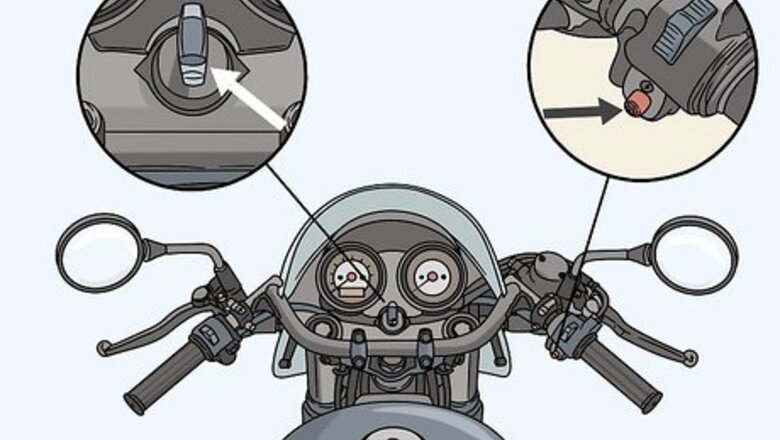
views
Locating the Controls
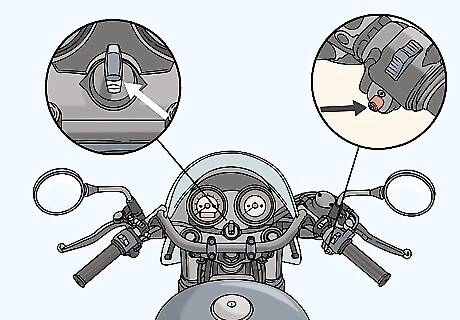
Find the ignition key and engine start button. You need both of these controls to get the bike started so you can start driving. While all motorcycles are different, these controls are usually in the same spot. They’re both easy to find. The ignition key is on the center of the bike under the gauge cluster. When you’re sitting on the motorcycle, look down below the speedometer in front of you. That’s where the ignition key is located. The engine start button is on the right handlebar. If you grab the handlebar with your right hand, the button will be near your thumb.
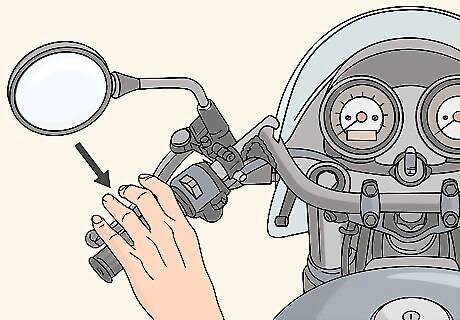
Grab the clutch on the left handlebar. The clutch is a lever that looks like a hand break for a bicycle. It is located on the left handlebar, so you’ll control it with your left hand while driving. When pulled, the clutch disengages the engine and allows you to shift gears. Getting a feel for using the clutch is essential for driving a manual motorcycle.
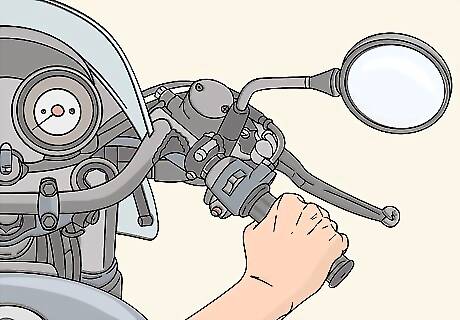
Find the throttle on the right handlebar. The right handlebar is the throttle. This gives power to the engine when pushed. When you roll on the throttle your speed will increase, and when you let it go the speed will decrease. The throttle works by twisting the right handlebar backward. Practice this motion while stationary to avoid giving the engine too much gas, which will cause your motorcycle to lurch forward.
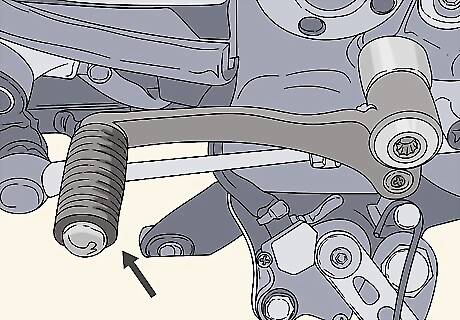
Locate the gear shift pedal near your left foot. You'll control the gear shift with your left foot. The pedal is located in front of a footrest. The gears on a motorcycle go low to high, meaning that the lowest setting is first gear. The second setting is Neutral (N), and second gear is after that. Then the numbers continue rising. Remember that N is between 1 and 2—this is important when you come to a stop because you have to shift into N. Some motorcycle models are different, but usually pushing the pedal up causes an upshift and pushing it down causes a downshift. Don’t keep your foot resting on this pedal while driving. If you hit it by accident you could damage your engine and transmission. Keep your foot on the footrest behind it and only hit the shift pedal when shifting gears.
Starting to Move
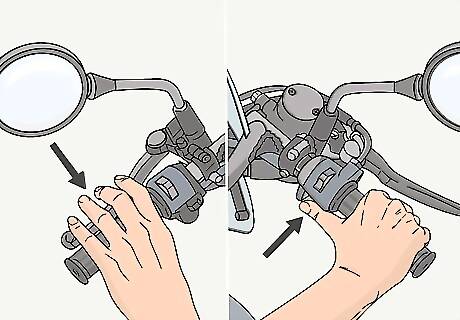
Start the motorcycle. Different motorcycles have different ignition procedures, so the exact motions will depend on your model. However, there are a few common features to starting all motorcycles. First turn on the ignition key in front of you to get the bike started. Downshift to Neutral if your bike is in gear. Remember that Neutral is in between gears 1 and 2. Hold the clutch and hit the engine start button. Release the button when you hear the engine fire. Push the gear shift pedal down into first gear while you're still pressing the clutch down, then release the pedal to begin moving. If the weather is cold, you may have to adjust your choke lever. This level is on the left handlebar. Sliding the level backwards opens the choke and pushing it forward closes the choke. If the engine won’t catch, try fully opening the choke, and then slowly close it to help the engine fire.

Grab the throttle with a flat wrist position. This prevents you from grabbing the throttle at an angle that feeds gas to the engine, which can give you an accidental burst of speed. Keep your hand level when holding the throttle to prevent this. To visualize a flat wrist position, lay your arm on a table in front of you while sitting with your palm down. Then make a fist. This is a flat wrist position.
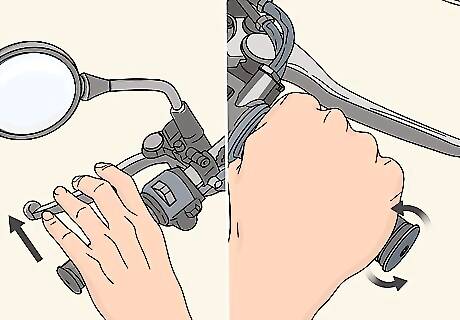
Release the clutch slowly while rolling on the throttle. Perform these two actions simultaneously to get the bike moving. Releasing the clutch engages the engine and hitting the throttle gives the engine gas. Together, these two actions get you moving. Releasing the clutch without hitting the throttle will cause the bike to stop abruptly because the engine has no gas. This could throw you from the bike. Remember to release the clutch and push the throttle gently. If you do either too fast, the bike will lurch forward and you could lose control.

Keep steady pressure on the throttle. Sudden changes will jerk the bike back and forth and you could lose control. Keep the pressure smooth and steady when you reach a speed you’re comfortable at. To get a feel for pushing the throttle gently, start the bike and keep the clutch pressed down. Then gradually give the throttle some pressure. The bike won’t move if your hand is on the clutch. This way, you can practice rolling on the throttle without worrying about losing control.
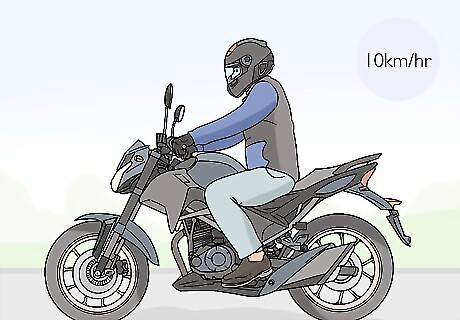
Roll forward smoothly. Before worrying about shifting gears, first reach a comfortable, smooth speed. Keep light, steady pressure on the throttle and focus on keeping your balance. At this point, keep your speed below 10 kilometres (6.2 mi) per hour. If you go faster you’ll have to shift up to second gear or risk damaging your engine.
Shifting Gears while Driving
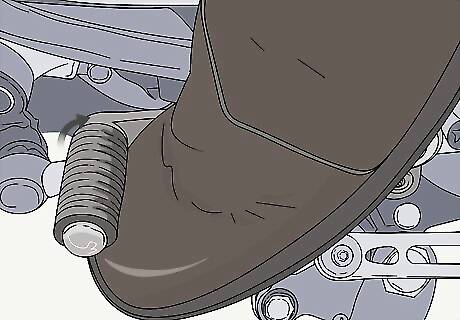
Accelerate to shifting speed. You'll upshift gears when your speed increases. When you’re just rolling, you don’t have to upshift and can keep the motorcycle in first gear. Before you upshift, you have to reach the appropriate speeds. The common guideline is: 0-10 kilometres (6.2 mi) per hour for first gear. 10–30 kilometres (6.2–18.6 mi) per hour for second gear. 30–50 kilometres (19–31 mi) per hour for third gear. 50–80 kilometres (31–50 mi) per hour for fourth gear.
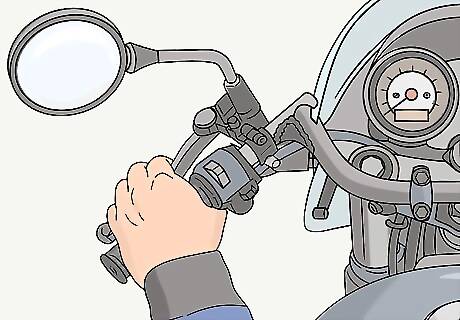
Push the clutch all the way down. This will disengage the engine and prepare for a gear shift. Push the clutch firmly and make sure the handle is down completely before you start shifting. Remember to use all 4 fingers to push the clutch down. This will avoid your hand from slipping off.
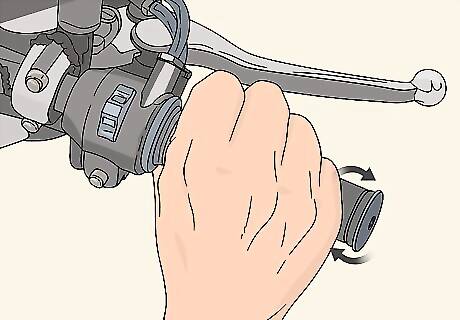
Ease off the throttle. After the engine is disengaged, slowly release the throttle with your right hand. This prepares your engine for the shift. Don’t let go of the throttle entirely. Release it gently so the engine isn’t at full power when you shift. Power shifting is when you change gears while keeping the engine at full throttle. It’s usually done in racing situations. This puts a lot of stress on your engine and transmission, and is not recommended.

Upshift by pushing the gear shift pedal up until it clicks. This click indicates that you’ve shifted into the next gear up. So if you were in second gear and feel a click, you’re now in third gear. Remember to push until you feel this click. Letting go before will cause your motorcycle to slip into the previous gear. Stop pushing when you feel the click or your bike will skip a gear, stressing your transmission. Keep track of the gear you’re in. Not all motorcycles have a display showing what gear you’re currently in. This means that while you’re driving, remember what gear you’re in to avoid shifting into the wrong gear.
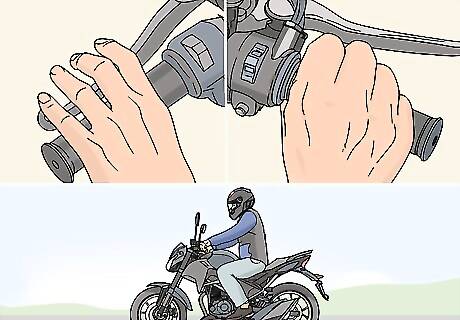
Release the clutch slowly while rolling on the throttle. Now that your motorcycle has switched gears, you can re-engage the engine. Do this slowly by gently releasing the clutch. At the same time, you’ll roll the throttle back on to keep your speed up. Release the clutch fully when you’ve reached a comfortable speed. Releasing the clutch quickly, or “popping the clutch,” will give you a fast burst of speed. This could cause you to lose control and the bike can also stall. Make sure you remember to release the clutch slowly.
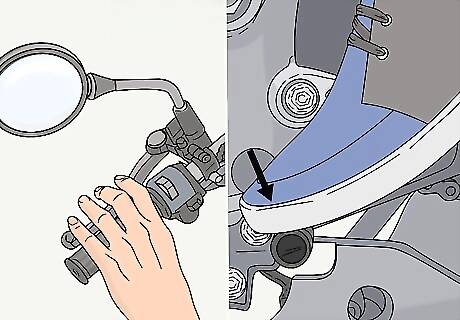
Downshift when your speed decreases. Just as you have to upshift when your speed increases, you also have to downshift when your speed decreases. There are a few important differences between downshifting and upshifting. Begin the downshift by grabbing the clutch, the same as you did during an upshift. But instead of rolling off the throttle after pressing the clutch, this time you'll gently roll on the throttle. Then use your left foot to push the gear shift pedal down until it clicks, indicating that you've downshifted. Release the clutch slowly and continue riding. Pay attention to your speed as you drive. Use the same speed chart from above to know when you should downshift.
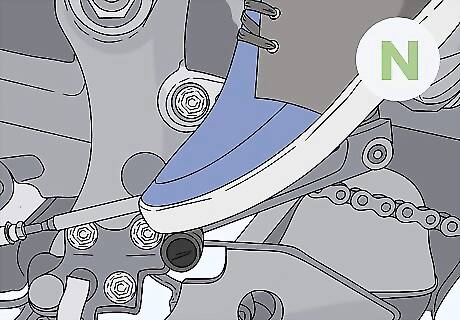
Shift into neutral when you stop. If you leave your motorcycle in gear when you come to a stop, the bike could suddenly take off when you release the clutch again. Avoid this outcome by shifting down into neutral when you stop. Remember that the neutral gear is between first and second gear on your motorcycle. When you're ready to move again, hold the clutch and push the gear shift pedal down into first gear. Then slowly release the clutch and roll the throttle on gently.



















Comments
0 comment